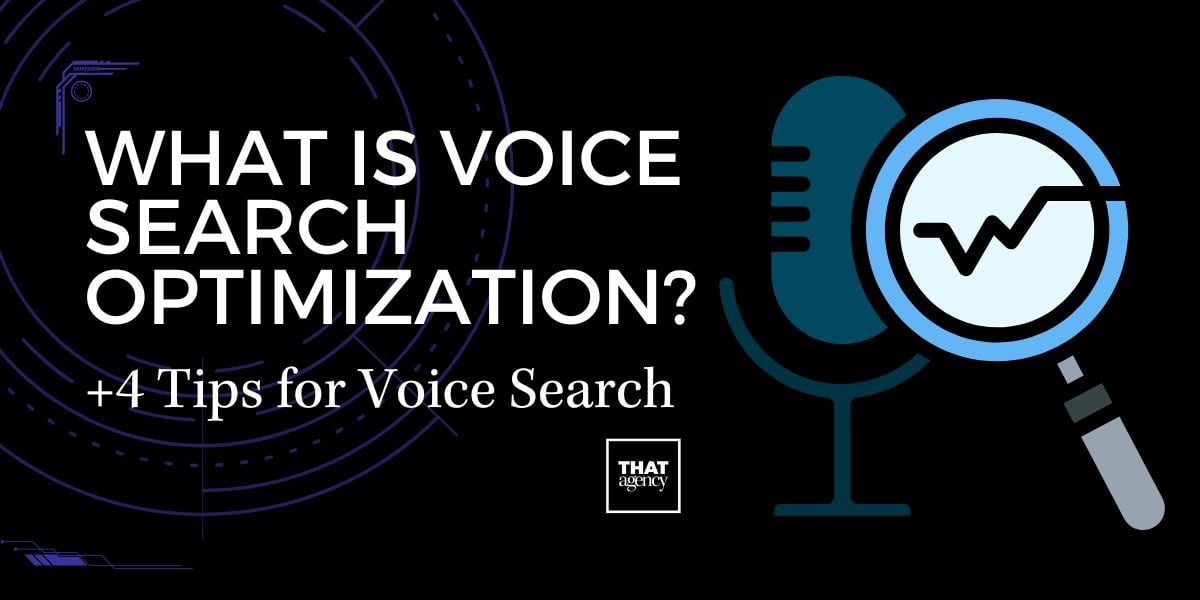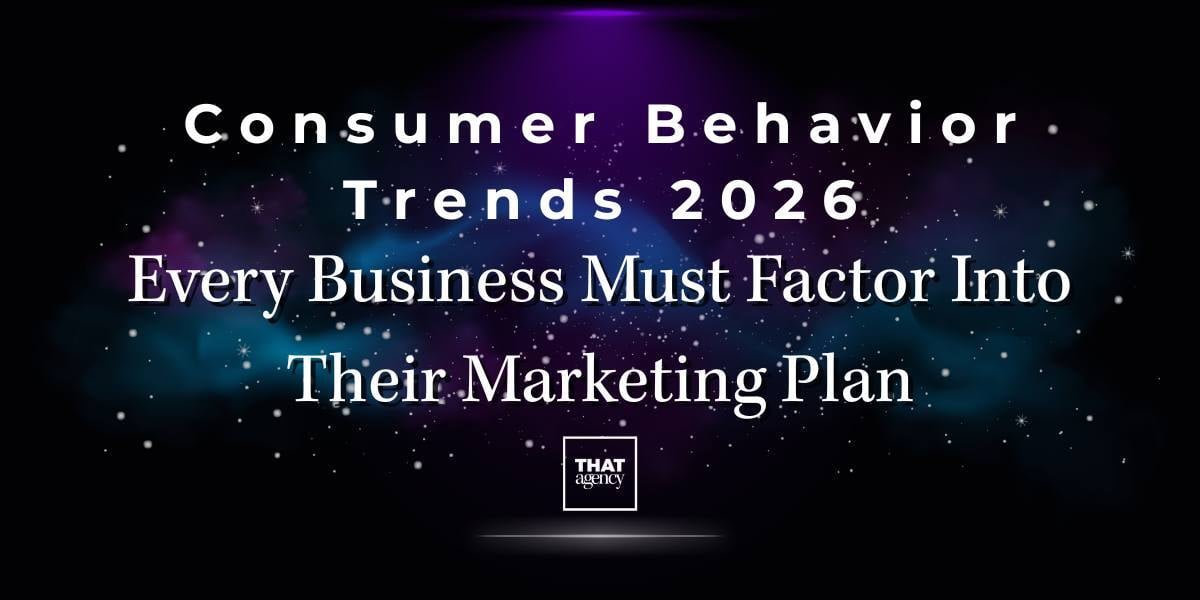These days, standing out from the crowd is more important than ever. Competitive advertising is a strategy that helps businesses grab attention, show what makes them unique, and convince customers to choose their products or services over others. In this blog, we’ll explain what competitive advertising is, why it’s important, and how you can use it to create a successful marketing strategy. If you’re looking to improve your advertising game, this guide is here to help.
.jpg?width=1200&height=600&name=Marketing%20Analytics%202025%20(3).jpg)
What is Competitive Advertising?
Competitive advertising is when a business creates ads that compare its products or services to its competitors. The goal is to show customers why your brand is the better choice. Sometimes this is done directly, by naming competitors, or indirectly, by focusing on what makes your business stand out.
You’ve probably seen examples of competitive advertising before. Think of two smartphone brands comparing their features, or a fast-food chain pointing out how its menu is better. These ads are meant to grab attention and help customers decide which brand to trust.
Why is Competitive Advertising Important?
In today’s crowded marketplace, consumers are faced with endless choices. This abundance can lead to decision fatigue, where potential customers struggle to differentiate one brand from another. This is where competitive advertising comes in. It’s not just about selling a product or service—it’s about cutting through the noise, standing out, and giving your audience a clear reason to choose you. Let’s break down why competitive advertising is so important and answer some common questions readers might have.
1. Stand Out from the Competition
One of the biggest challenges in marketing is making your brand memorable. Competitive advertising helps you achieve this by highlighting what makes your product or service unique.
- How does this work? By focusing on your strengths—such as better features, lower costs, or faster results—you can create a strong impression that sticks with potential customers.
- Why does it matter? When customers clearly understand what sets you apart, they’re more likely to pick you over a competitor.
2. Connect with Customers
Creative, well-thought-out competitive ads grab attention and make a lasting impact. They appeal to emotions, values, or specific needs, creating a connection that goes beyond just features or price.
- What makes an ad memorable? Humor, strong visuals, relatable storytelling, or direct comparisons can make your ad stand out.
- How does this build trust? By addressing customer needs or solving pain points, your brand becomes a trusted solution.
3. Show You’re in the Game
Competitive advertising demonstrates that your brand is aware of the competition and is confident in its ability to meet or exceed customer expectations.
- Why does this boost credibility? It shows that you understand the market and are proactive in addressing customer concerns.
- How does it improve brand image? When you’re seen as a strong competitor, customers are more likely to view you as a reliable and capable option.
Types of Competitive Advertising
There’s no one-size-fits-all approach to competitive advertising. The best strategy depends on your industry, audience, and goals. Here are three common types, along with answers to questions about when and how to use them:
1. Direct Comparison Ads
These ads directly compare your product or service to a competitor’s. They’re often bold and straightforward, showing why your offering is superior.
- When should you use direct comparisons? If your product has a clear, measurable advantage (like lower cost or better performance), this approach can be highly effective.
- What are some examples?
- A car manufacturer highlighting better gas mileage compared to a competitor.
- A phone company showing side-by-side specs to emphasize their superior features.
2. Storytelling Ads
Instead of focusing on comparisons, storytelling ads highlight your brand’s mission, values, and unique identity. They connect with customers on an emotional level, building loyalty and trust.
- When are storytelling ads best? If your brand stands out because of its values (like sustainability, innovation, or community impact), storytelling is a great way to engage your audience.
- What’s an example of storytelling?
- A coffee company sharing the journey of how their beans are ethically sourced, focusing on the positive impact they have on local farmers.
3. Value-Focused Ads
These ads emphasize the specific benefits your product or service offers. They might focus on price, quality, features, or a combination of these to show why your brand provides better value.
- When should you use value-focused ads? If your audience is price-conscious or driven by specific needs, these ads can be persuasive.
- What’s an example?
- An online retailer offering free shipping and better return policies compared to competitors.
Common Questions About Competitive Advertising
1. Is competitive advertising only for big businesses?
No! While larger companies often have the resources for high-profile competitive ads, small businesses can also benefit. A well-placed digital ad or targeted social media campaign can be just as effective for local or niche markets.
2. What if my competitors have more features or a lower price?
Focus on your unique strengths. Maybe you offer better customer service, a longer warranty, or a more user-friendly experience. Highlight what you do best, and don’t be afraid to address potential customer concerns directly.
3. Can competitive ads hurt my brand if they’re too aggressive?
Yes, overly aggressive or negative ads can backfire. Always aim for professionalism and respect. Show confidence in your product without tearing others down.
4. How can I track the success of my competitive advertising?
Use tools like Google Analytics to monitor ad performance. Key metrics to watch include:
- Click-through rate (CTR)
- Conversion rate
- Customer engagement (likes, shares, comments)
How to Build a Winning Competitive Advertising Strategy
Creating a successful competitive advertising strategy requires careful planning and execution. Below, we break down the steps to help your brand stand out and drive results. Each step answers common questions and includes actionable advice.
1. Know Your Competition
Why is this important?
Understanding your competitors is the foundation of competitive advertising. If you don’t know what others are offering, it’s hard to position your brand as the better choice.
How to do it:
- Research Competitor Offerings: Explore what products or services your competitors provide and identify their unique features.
- Analyze Strengths and Weaknesses: Find gaps in their offerings. Do they lack customer support? Are their prices too high for the value they provide? This helps you pinpoint areas where you can outshine them.
- Use Tools: Platforms like SEMrush, Ahrefs, and SpyFu can show you what keywords competitors are ranking for, their ad spend, and even examples of their ad creatives.
Questions to ask yourself:
- Who are my main competitors?
- What are their strengths, and how can I match or exceed them?
- Where are they falling short, and how can I fill that gap?
2. Focus on What Makes You Unique
Why is this important?
Your Unique Selling Proposition (USP) is the reason customers choose your brand over others. Competitive advertising thrives on showcasing what makes you stand out.
How to do it:
- Identify Your USP: Ask yourself what your product or service offers that competitors don’t. It could be better pricing, superior quality, faster service, or a unique feature.
- Highlight Benefits: Focus on benefits, not just features. For example, instead of saying, “Our app has a 99% uptime,” say, “Our app keeps your business running smoothly, with almost zero downtime.”
- Compare Without Copying: Be inspired by competitor strategies, but don’t imitate. Your ads should reflect your brand’s identity.
Questions to ask yourself:
- What do we do better than anyone else?
- What problems does our product solve that competitors don’t?
- How can we showcase this in a way that resonates with our audience?
3. Understand Your Audience
Why is this important?
Not all customers are the same. The better you know your target audience, the more effective your ads will be.
How to do it:
- Create Buyer Personas: Define who your ideal customer is. Consider their age, income, location, values, and pain points.
- Tailor Messaging: Match your ad’s tone and content to what your audience cares about. For instance:
- For budget-conscious shoppers, emphasize cost savings and deals.
- For quality-focused buyers, highlight premium features and durability.
- Engage on Platforms They Use: Run ads where your audience spends time, whether that’s Google, Instagram, or LinkedIn.
Questions to ask yourself:
- Who is my target audience, and what are they looking for?
- What problems do they need solved?
- How can I speak to their values and preferences in my ads?
4. Be Honest and Transparent
Why is this important?
People are more likely to trust brands that back up their claims with evidence. Exaggerating or misleading customers can damage your reputation.
How to do it:
- Use Data: Support your claims with facts. For example, include stats like, “95% of customers recommend our product.”
- Show Proof: Share testimonials, case studies, and user reviews that demonstrate real results.
- Avoid Overpromising: It’s better to under-promise and over-deliver than to disappoint your customers.
Questions to ask yourself:
- Can I prove every claim I make in my ads?
- Do I have customer stories or reviews to back up my messaging?
- Am I being transparent about my product’s strengths and limitations?
5. Stay Professional
Why is this important?
While competitive advertising encourages you to compare your brand with others, crossing the line into negativity or dishonesty can hurt your image.
How to do it:
- Keep It Classy: Focus on what you do well rather than tearing down competitors.
- Follow Advertising Laws: Avoid false claims or comparisons that could lead to legal trouble.
- Be Respectful: A professional tone builds trust and ensures long-term customer loyalty.
Questions to ask yourself:
- Does my ad reflect my brand values?
- Am I using fair and accurate comparisons?
- Would my audience see this as professional or petty?
How Competitive Ads Deliver Results
When done right, competitive ads can produce impressive results. Here’s why they work:
1. Grab Attention
Competitive ads are bold and stand out. Whether you’re directly comparing your product to a competitor’s or highlighting your unique benefits, the directness of the message makes people pay attention.
2. Build Trust
Showing awareness of your competitors demonstrates confidence. It also reassures customers that you’ve done the homework for them and that your product is a superior choice.
3. Drive Action
By clearly addressing customer pain points and showing why your product solves them better than others, competitive ads make it easier for people to decide to buy from you.
Example:
A clothing store could run ads comparing their prices and quality to competitors. For instance:
- "Why pay more for the same style? Our jeans are half the price of [competitor], with double the durability."
Questions Readers May Have About Competitive Advertising
Q: What if I can’t find a unique selling point?
A: Dig deeper into your business. Ask your customers what they love most about your product or service. Sometimes your USP is something you take for granted, like great customer service or free shipping.
Q: What if my competitors copy my strategy?
A: Stay ahead by constantly innovating. Competitive advertising works best when you’re always one step ahead in understanding your audience and improving your offering.
Q: How much should I spend on competitive advertising?
A: Start with a budget you’re comfortable with and track your ROI (return on investment). Focus on high-impact platforms like Google Ads or Facebook to maximize results.
Q: Can competitive ads backfire?
A: Yes, if they’re too aggressive or dishonest. Always keep your tone respectful and professional to avoid alienating your audience.
By following these steps and answering these common questions, your competitive advertising strategy can help your business stand out, build trust, and win over customers. With the right tools and insights, your ads can drive real results while keeping your brand professional and respected.
Measuring Success with Competitive Advertising
Once you’ve launched your ads, track how they’re performing. Focus on key metrics like:
- Click-Through Rate (CTR): This shows how many people clicked on your ad.
- Conversion Rate: Measure how many people took action, like making a purchase or signing up.
- Engagement: See how users interact with your ad, like likes, shares, or comments.
Tools like Google Analytics can help you track these results and improve your ads over time.
Best Ways to Use Competitive Advertising Online
Competitive advertising can help your business stand out and reach potential customers, but knowing where and how to run these ads is key. Below, we’ll dive deeper into the most effective online strategies for competitive advertising, including tips, examples, and answers to common questions.
1. Search Engines
Search engines like Google and Bing are excellent platforms for competitive ads. They allow you to target customers who are actively searching for products or services.
- How to Use Search Engines for Competitive Ads:
- Target Competitor Keywords: Use tools like Google Ads or SEMrush to identify keywords your competitors rank for. For example, if a competitor is ranking for "best fitness tracker," create ads targeting the same phrase but promoting your product's unique features.
- Craft a Compelling Message: Highlight why your brand is the better choice. Use phrases like "Better Features, Same Price" or "Switch to [Your Brand] Today."
- Use Negative Keywords: Prevent your ads from showing up in irrelevant searches to ensure your budget is used efficiently.
- Example: A new streaming service could run ads targeting "Netflix alternatives" or "Hulu pricing" to attract cost-conscious customers.
- Common Question: Will targeting competitor keywords hurt my brand image?
Not if done ethically and respectfully. The goal is to position your product as an alternative, not to discredit the competitor.
2. Social Media
Platforms like Facebook, Instagram, LinkedIn, and TikTok allow for creative and highly targeted competitive advertising.
- How to Use Social Media for Competitive Ads:
- Target Specific Audiences: Use social media’s advanced targeting features to focus on users who follow or engage with your competitors.
- Use Visuals and Stories: Social media is a visual platform, so use eye-catching images, videos, and storytelling to grab attention.
- Leverage Lookalike Audiences: Create ads aimed at people who share similar interests or behaviors with your competitors’ customers.
- Example: A coffee brand can run Instagram ads comparing their eco-friendly packaging to a competitor’s while showing how their coffee tastes just as great.
- Common Question: How do I know which social media platform to use?
It depends on your audience. For younger users, try TikTok or Instagram. For professionals, use LinkedIn. Facebook works well for a broad audience.
3. A/B Testing
A/B testing, also called split testing, allows you to compare two versions of an ad to see which performs better.
- How to Use A/B Testing for Competitive Ads:
- Test Headlines: Try different messages, such as “Save 20% Today” versus “Switch and Save Big.”
- Experiment with Images: Use variations of your product photos or lifestyle images to see which resonates more.
- Compare Call-to-Actions (CTAs): Test phrases like “Shop Now” against “Learn More” to find the one that drives more clicks.
- Example: A tech company could run two ad versions—one focusing on price and the other on speed—to see what customers care about most.
- Common Question: How long should I run an A/B test?
Run the test long enough to gather meaningful data, typically two weeks, depending on your budget and audience size.
4. Retargeting Ads
Retargeting reminds users about your brand after they’ve visited your site or interacted with your competitor’s ads.
- How to Use Retargeting Ads Effectively:
- Set Up Retargeting Pixels: Use tools like Google Ads or Facebook Ads Manager to track visitors to your site or those who engaged with similar products.
- Personalize Your Ads: Show ads that reflect what users viewed on your site, such as products left in their cart or services they browsed.
- Use Time-Sensitive Offers: Encourage users to act quickly with limited-time discounts or promotions.
- Example: A hotel chain could retarget users who searched for stays at competitor locations with ads offering exclusive deals.
- Common Question: Are retargeting ads annoying to users?
Not if done thoughtfully. Avoid showing the same ad repeatedly and focus on value-driven offers.
Challenges in Competitive Advertising
Competitive advertising can be highly effective, but it does come with some challenges. Understanding these obstacles and how to address them is critical for success.
1. Legal Issues
- The Challenge: Making false claims about your competitors can lead to legal trouble.
- Solution: Always back up your claims with facts and data. For example, instead of saying “the best in the world,” highlight specific achievements like “rated #1 in customer satisfaction.”
2. Negative Perceptions
- The Challenge: Overly aggressive or negative ads might alienate customers.
- Solution: Keep your tone professional and focus on your strengths rather than attacking competitors. For instance, use phrases like “We deliver faster results” instead of “Our competitor is slow.”
3. Higher Costs
- The Challenge: Competing for the same keywords or audience as your competitors can drive up ad costs.
- Solution: Optimize your campaigns by focusing on high-intent keywords, using geotargeting, and testing ad performance to maximize your budget.
Competitive advertising can feel overwhelming, especially when dealing with legal, perception, or budget issues. Partnering with experienced professionals like THAT Agency can make all the difference. They specialize in crafting ethical, effective campaigns tailored to your business needs, ensuring you stand out without overstepping boundaries.
Overcoming Competitive Advertising Challenges with Experts
Competitive advertising is a smart way to show customers why your brand is the best choice. By understanding your competition, focusing on your strengths, and creating professional, engaging ads, you can stand out in the market and grow your business.
If you’re ready to boost your marketing with competitive advertising, reach out to THAT Agency. Our team can help you craft winning strategies that get results. Contact us today to get started!




.jpg)